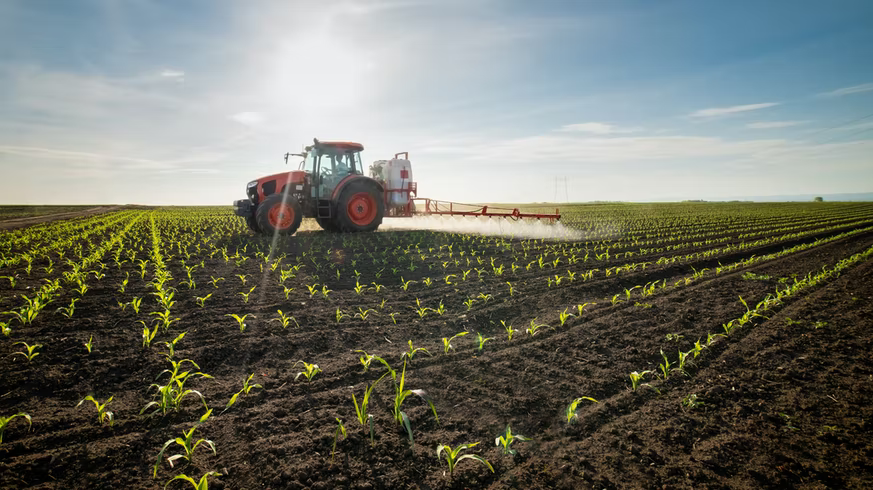Reviewed by Alex SmithMay 9 2022
A new study has shown that farmlands present throughout Europe are possibly considered the greatest global reservoir of microplastics as a result of the high concentrations found in fertilizers that are derived from sewage sludge.

Image Credit: Cardiff University.
At the Cardiff University and the University of Manchester, researchers evaluate that between 31,000 and 42,000 tons of microplastics (or 86 to 710 trillion microplastic particles) are employed in European soils every year. This mirrors the concentration of microplastics discovered in ocean surface waters.
The researchers evaluated that microplastics eliminated from raw sewage at wastewater treatment plants tend to create nearly 1% of the weight of sewage sludge. This is commonly utilized as a fertilizer on farms throughout Europe. The research was published in the journal Environmental Pollution,
The United Kingdom was shown to possibly have the greatest amount of microplastic contamination in its soils, along with 500 to 1000 microplastic particles per square meter of agricultural land applied annually. This is followed by Germany, Portugal and Spain.
Generally, sewage sludge is utilized on agricultural land as a renewable and sustainable source of fertilizer across European countries, in part as a result of EU directives that encourage the diverting of sewage sludge away from landfills and incineration as well as towards agriculture and energy production.
Ultimately, microplastics that spread onto farmland will be shifted back into the natural watercourse through infiltration to groundwater or surface water run-off.
Microplastics measure less than 5 mm in size and hence pose a considerable threat to wildlife as they are ingested easily and can carry toxic chemicals, contaminants and dangerous pathogens, possibly affecting the complete food chain.
Our research questions whether microplastics are in fact being removed at wastewater treatment plants at all, or are effectively being shifted around the environment.
James Lofty, Study Lead Author, School of Engineering, Cardiff University
Lofty added, “A clear lack of strategy from water companies to manage microplastics in sewage sludge means these contaminants are transported back into the soil and will eventually return to the aquatic environment.”
In their study, the researchers took samples from the Nash Wastewater Treatment Plant in Newport, South Wales, treating the integrated sewage from a population of 300,000.
The analysis disclosed that the treatment plant was almost 100% effective in eliminating large microplastic particles, ranging from 1 to 5 mm in size, from incoming sewage that would otherwise be discharged into the aquatic surrounding.
Every gram of sewage sludge consisted of around 24 microplastic particles, which was roughly 1% of its weight.
Furthermore, this data was utilized to evaluate the impact throughout Europe with the help of figures obtained from the European Commission and Eurostat on the use and application of sewage sludge as fertilizer across the continent.
Since the scientists failed to examine microplastics that measured below 1 mm in size, the full concentrations are likely to be a lot higher compared to their estimates.
Our results highlight the magnitude of the problem across European soils and suggest that the practice of spreading sludge on agricultural land could potentially make them one of the largest global reservoirs of microplastic pollution.
James Lofty, Study Lead Author, School of Engineering, Cardiff University
Lofty added, “At present, there is currently no European legislation that limits or controls microplastic input into recycled sewage sludge based on the loads and toxicity of microplastic exposure.
“Efforts should be made to increase standardized monitoring of microplastic concentrations in sewage sludge and agricultural soils, which would provide a more accurate picture of contamination levels in soils across Europe,” continued Lofty.
The study was headed by Cardiff University and included academics from the University of Manchester.
Journal Reference:
Lofty, J., et al. (2022) Microplastics removal from a primary settler tank in a wastewater treatment plant and estimations of contamination onto European agricultural land via sewage sludge recycling. Environmental Pollution. doi.org/10.1016/j.envpol.2022.119198.